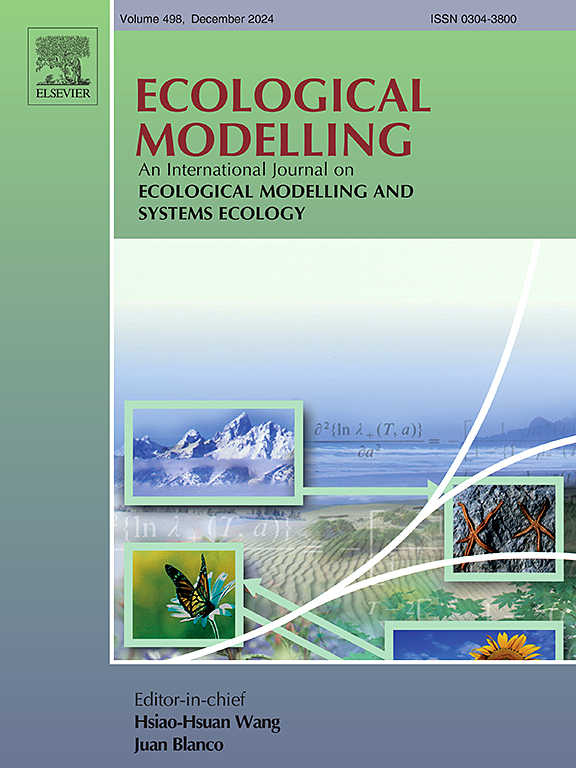Snow runoff modelling in the upper Indus River Basin and its implication to energy water food nexus
IF 3.2
3区 环境科学与生态学
Q2 ECOLOGY
引用次数: 0
Abstract
Pakistan's hydropower sector depends heavily on glacier and snowmelt water that originates from the Upper Indus Basin (UIB). It is expected that climate change may adversely affect future hydropower generation capacity as a result of fluctuations in the magnitude, seasonality and hydrological extremes of the Indus River flow. This study employed the Degree-Day Snowmelt Runoff Model alongside the Moderate Resolution Imaging Spectroradiometer MODIS and daily ground-based hydro-meteorological data to model the snowmelt runoff response in the UIB. The results indicated a significant increase in the annual and seasonal runoff under both RCP4.5 and RCP8.5 scenarios, suggesting more water availability for hydropower and irrigation. By the end of the century, annual river flow is projected to increase by 28 % to 69 % under the RCP4.5 and RCP8.5 climate scenarios. Consequently, rise in annual river flow is expected to increase the electricity generation capacity of future hydropower projects by 93 % to 167 % under the RCP4.5 and RCP8.5 scenarios, respectively. The construction of robust multipurpose dams may potentially reduce flood risks in downstream areas during peak flows, while also supplying water for hydropower generation and irrigation during low flows. This, in turn, may enhance the resilience of both the hydropower and agriculture sectors in the face of climate change.
印度河上游流域的雪水径流模型及其对能源水粮食关系的影响
巴基斯坦的水电行业在很大程度上依赖于源自上印度河流域(UIB)的冰川水和融雪水。由于印度河流量的大小、季节性和极端水文情况的波动,预计气候变化可能会对未来的水力发电能力产生不利影响。这项研究利用度日融雪径流模型、中分辨率成像分光仪 MODIS 和每日地面水文气象数据,对 UIB 的融雪径流响应进行建模。结果表明,在 RCP4.5 和 RCP8.5 两种情景下,年径流量和季节径流量都有显著增加,这表明有更多的水可用于水力发电和灌溉。到本世纪末,在 RCP4.5 和 RCP8.5 气候情景下,河流年径流量预计将增加 28% 至 69%。因此,在 RCP4.5 和 RCP8.5 情景下,河流年流量的增加预计将使未来水电项目的发电能力分别提高 93% 到 167%。建造坚固的多用途大坝有可能降低下游地区在洪峰流量期间的洪水风险,同时还能在低流量期间为水力发电和灌溉供水。这反过来又可增强水电和农业部门在气候变化面前的复原力。
本文章由计算机程序翻译,如有差异,请以英文原文为准。
求助全文
约1分钟内获得全文
求助全文
来源期刊

Ecological Modelling
环境科学-生态学
CiteScore
5.60
自引率
6.50%
发文量
259
审稿时长
69 days
期刊介绍:
The journal is concerned with the use of mathematical models and systems analysis for the description of ecological processes and for the sustainable management of resources. Human activity and well-being are dependent on and integrated with the functioning of ecosystems and the services they provide. We aim to understand these basic ecosystem functions using mathematical and conceptual modelling, systems analysis, thermodynamics, computer simulations, and ecological theory. This leads to a preference for process-based models embedded in theory with explicit causative agents as opposed to strictly statistical or correlative descriptions. These modelling methods can be applied to a wide spectrum of issues ranging from basic ecology to human ecology to socio-ecological systems. The journal welcomes research articles, short communications, review articles, letters to the editor, book reviews, and other communications. The journal also supports the activities of the [International Society of Ecological Modelling (ISEM)](http://www.isemna.org/).
 求助内容:
求助内容: 应助结果提醒方式:
应助结果提醒方式:


